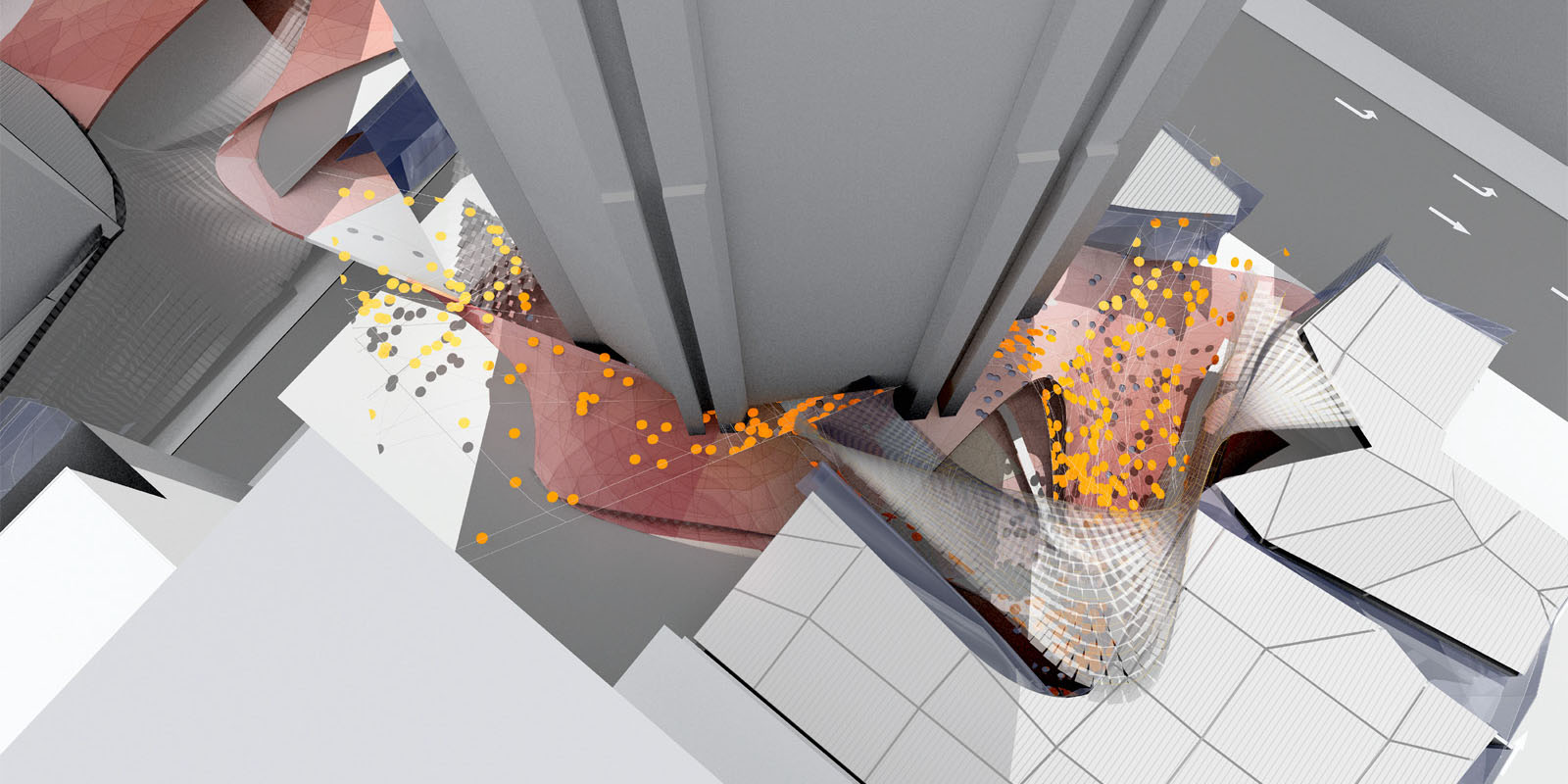Computational Swarming: A Cultural Technique for Generative Architecture
DOI:
https://doi.org/10.7480/footprint.8.2.808Abstract
After a first wave of digital architecture in the 1990s, the last decade saw some approaches where agent-based modelling and simulation (ABM) was used for generative strategies in architectural design. By taking advantage of the self-organisational capabilities of computational agent collectives whose global behaviour emerges from the local interaction of a large number of relatively simple individuals (as it does, for instance, in animal swarms), architects are able to understand buildings and urbanscapes in a novel way as complex spaces that are constituted by the movement of multiple material and informational elements. As a major, zoo-technological branch of ABM, Computational Swarm Intelligence (SI) coalesces all kinds of architectural elements – materials, people, environmental forces, traffic dynamics, etc. – into a collective population. Thereby, SI and ABM initiate a shift from geometric or parametric planning to time-based and less prescriptive software tools.
Agent-based applications of this sort are used to model solution strategies in a number of areas where opaque and complex problems present themselves – from epidemiology to logistics, and from market simulations to crowd control. This article seeks to conceptualise SI and ABM as a fundamental and novel cultural technique for governing dynamic processes, taking their employment in generative architectural design as a concrete example. In order to avoid a rather conventional application of philosophical theories to this field, the paper explores how the procedures of such technologies can be understood in relation to the media-historical concept of Cultural Techniques.

Downloads
Published
Issue
Section
License
- Authors retain copyright and grant the journal right of first publication with the work simultaneously licensed under a Creative Commons Attribution License that allows others to share the work with an acknowledgement of the work's authorship and initial publication in this journal.
- Authors are able to enter into separate, additional contractual arrangements for the non-exclusive distribution of the journal's published version of the work (e.g., post it to an institutional repository or publish it in a book), with an acknowledgement of its initial publication in this journal.



